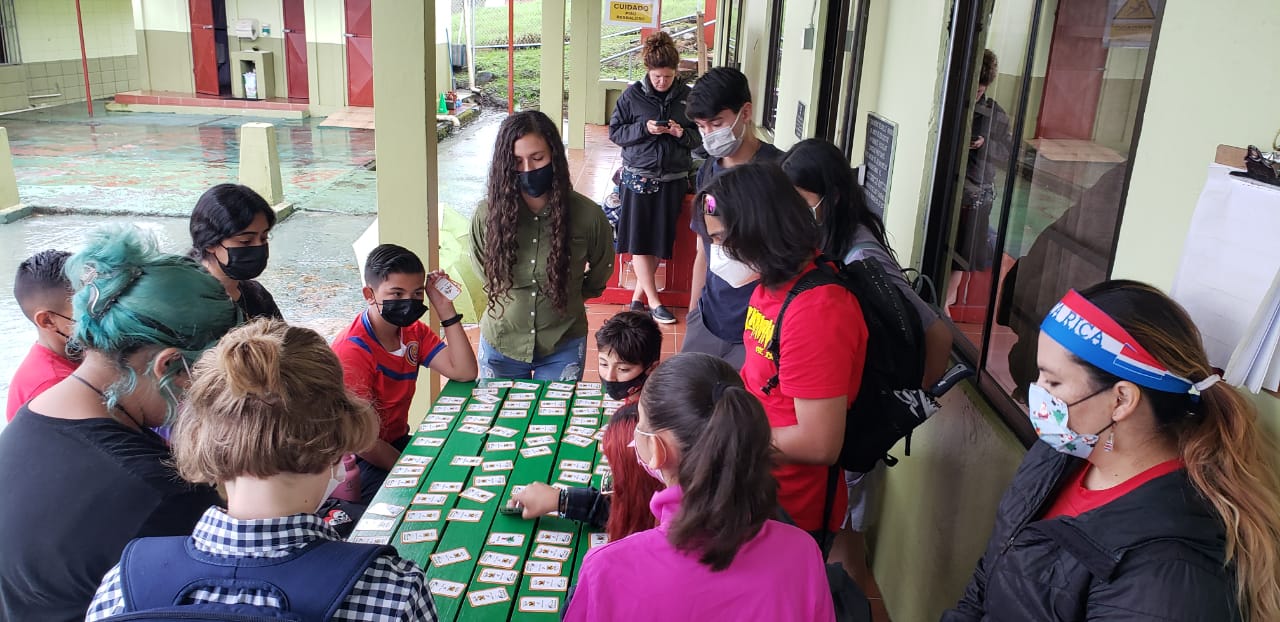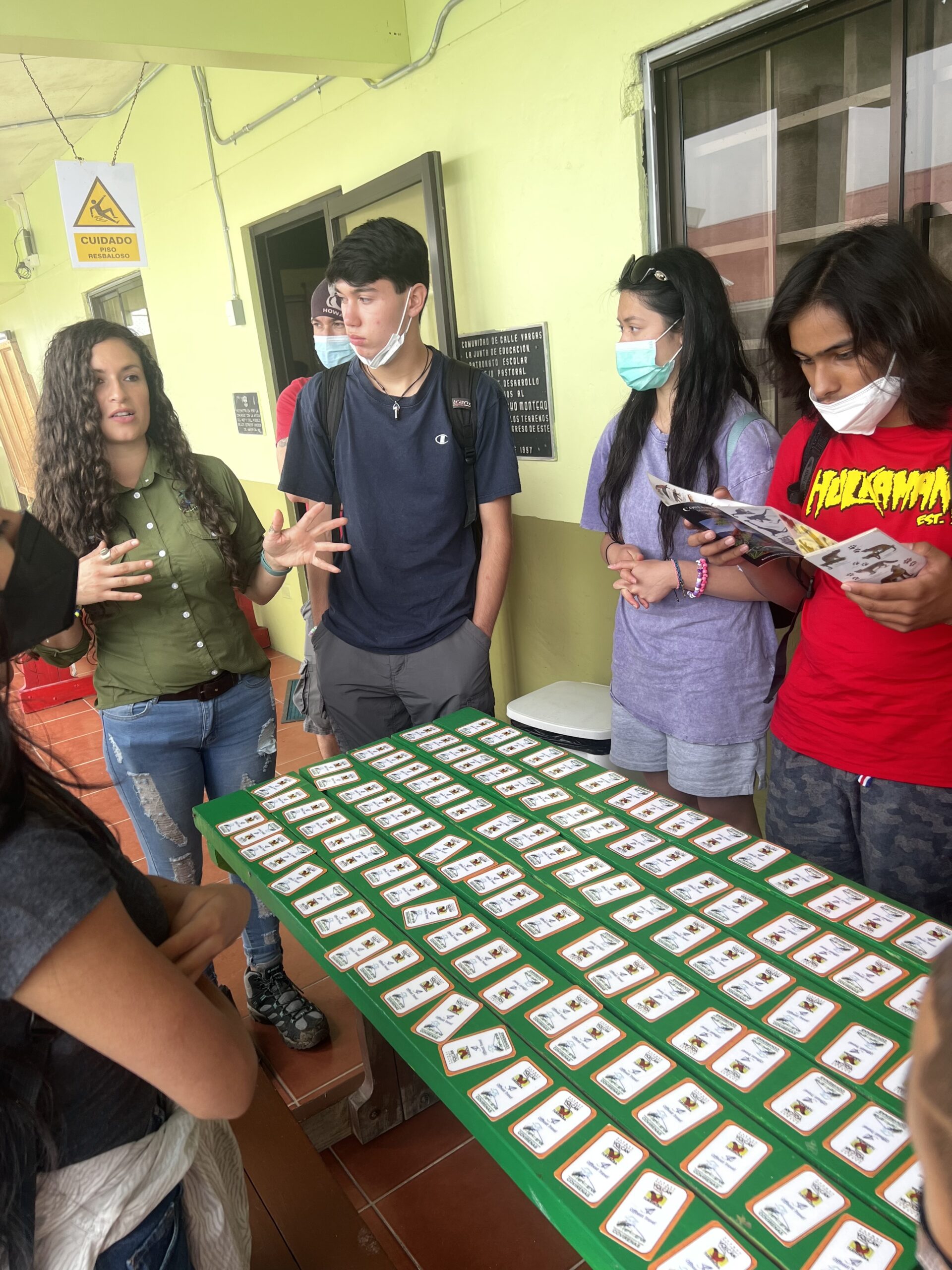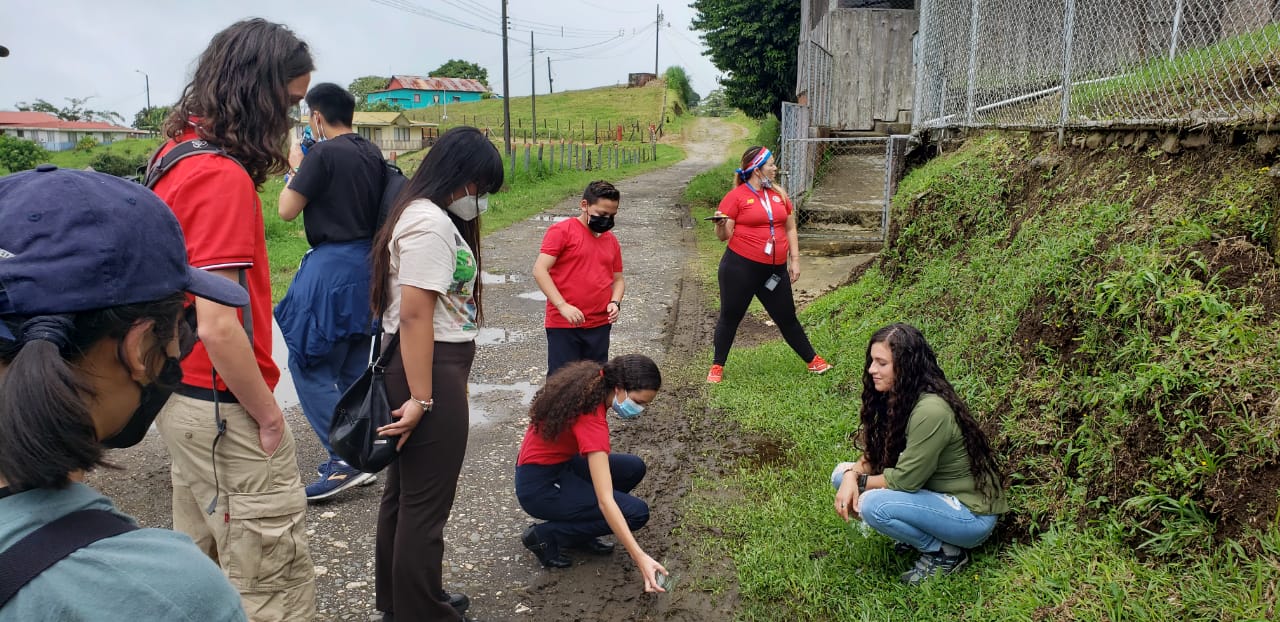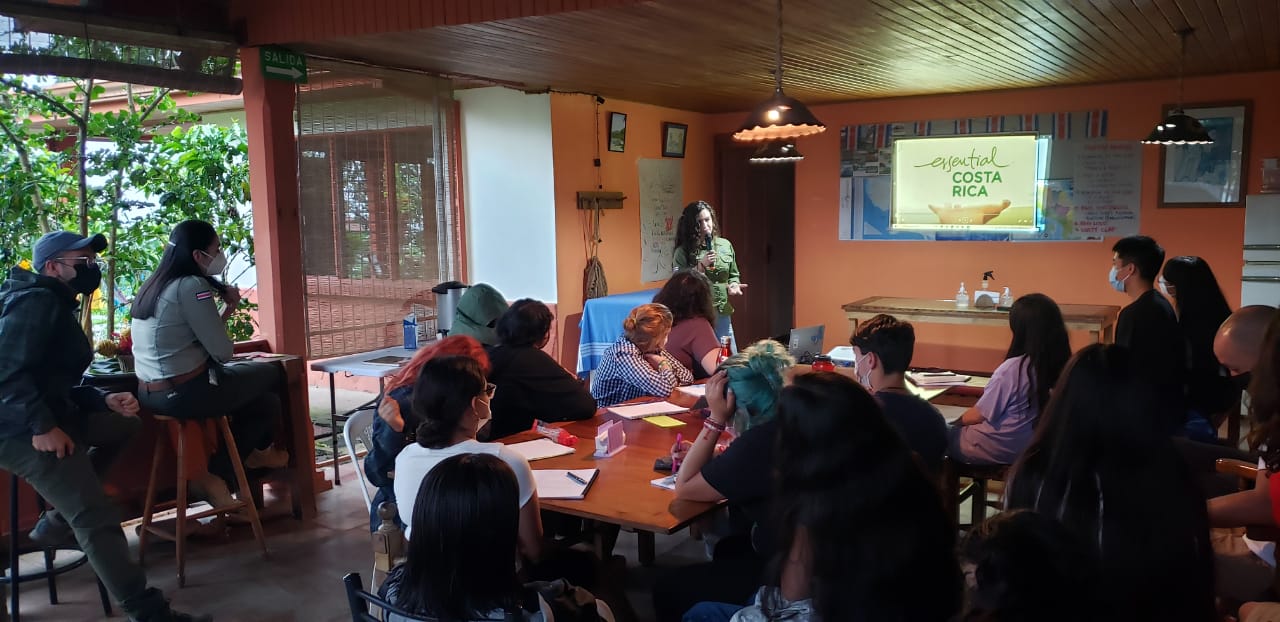Hello readers! Today’s focus was “exploring conservation”, which was centered around Costa Rica’s conservation efforts as one of the leading countries in the world in environmental justice. We started our day off by heading to a small school in Santa Cruz, Turrialba. There we met with a few students from the school in fifth and sixth grade. Our group was split into two and both groups went with four kids to do activities with our guest speakers. One went with Karla, a name you may recognize as the owner of the cheese farm from day four, and learned the various species of mammals found here in Costa Rica. This included species such as the puma, jaguar, and sloth. These mammals were then categorized with either their tracks/prints or usual food source, displayed on different trading cards



After listening to the explanation of these species, we quickly made our way to a muddy patch near the school grounds. Here one of our glimpsers knelt on the ground and placed a mold in the mud that would mimic the paw print of a puma. After lifting the mold, there was a faint replica of puma tracks. We poured plaster onto this mark, which would later harden and become a perfect puma print. Following this activity, Karla challenged our memory of the relationships between the species and their certain tracks or food source with a memory card game. With the stack of cards spread out, upside down on the table, each group member took turns trying to make pairs among the cards.

For the next activity, we listened to a presentation about Costa Rica’s history of conservation efforts, specifically the efforts of their national parks. It also covered the history of the Turrialba Volcano, which we could see erupting today with clouds of smoke emitting from the crater. The Turrialba volcano is actually one of the five active volcanos in Costa Rica. Each volcano in Costa Rica is protected by a national park, there being 29 national parks in the entirety of Costa Rica. In these national parks, several species of plants and animals are protected and monitored. After the presentation, we had snacks with the kids and both groups switched activities. We had said our goodbyes and headed back to Aquiares where we had lunch. While we awaited the arrival of our guest speakers, Karla, and the two park rangers, in the dining room Memo and Sonia had set up the projector to watch the FIFA World Cup Qualifying game. It was Costa Rica against New Zealand. After much anxiety, cheering, chanting, and sometimes screaming, Costa Rica had won and will now get to play in the World Cup in November. To show support many people in Costa Rica, including Memo and the students at the school, had worn red.
By 2:00 the guest speakers had arrived and presented a very informative presentation that continued the discussion of conservation efforts. We learned more about the history of Costa Rica, the steps the county is taking in improving conservation efforts, and the problems Costa Rica faces. Although there are high rates of air pollution, and financial problems and the county is the largest consumer of agrochemicals in the world, Costa Rica’s astonishing efforts can not be ignored. For instance, 99% of their electricity is produced by renewable sources, a lot of that coming from their plentiful amount of water. To put that into perspective, in the United States only 21% of our energy is from renewable sources. From having 6% of the world’s biodiversity to 25% of their territory being under conservation, Costa Rica’s conservation efforts are something everyone should learn from. By the afternoon, we had written postcards to the many donors and supporters of Global Glimpse, ending our night with dinner and our nightly meeting. To the people who support Global Glimpse and even our readers, we thank you.


Great job! Such a fun and educational day, you guys learned a lot from the leaders and the environment.
How exciting and educational all that you are learning, how good that by knowing this you can see the difference between countries, my Esther learns everything so you can tell us, we love you very much.😘🤗
We at home awaiting your return are certainly learning interesting information about Costa Rica…great reporting by the Glimpsers like emma & mikhail today. Thank you all for taking us along for the experience each day… I am enjoying the journey!
We’re so proud of all of your efforts to educate yourself and others of the inspirational conservation efforts in the beautiful country of Costa Rica!
Thank you for the wonderful photos and all of the great information.
We miss you and can’t wait to hear even more about this amazing trip and your incredible adventure, Emma!! We’ll be cheering for La Sele in November!! From the Russian River Rats!!